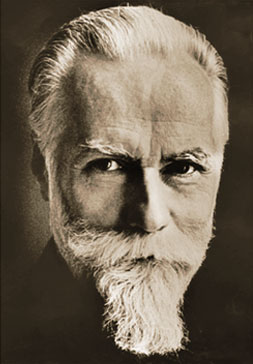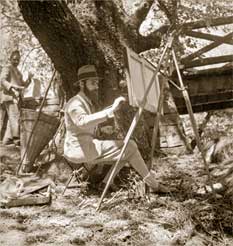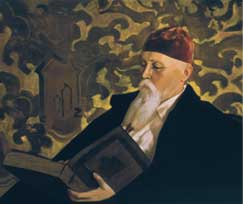From 1919, Svetoslav Roerich studied architecture in London, at the Royal Academy of Arts. After a year, he continued his education in the USA, firstly at Columbia University and then at Harvard University, whilst also attending the Massachusetts University Sculpture Department. In America, Svetoslav Roerich took most active part in the work of every cultural and educational institutions established by Nicholas and Helena Roerich. At the age of 19, he headed the International Artistic Center “Corona Mundi”, and later became the Vice-President of the New York Nicholas Roerich Museum. In 1923, Svetoslav Roerich visited India for the first time. There he became acquainted with the most famous architectural masterpieces of Indian culture, as well as with the ancient and modern art of that country. In India, he laid the foundations of his unique collection of Oriental works of art that, unfortunately, went almost completely lost after his death.
In 1924, S. Roerich returned to the USA and took most active part in the managerial work related to the cultural and educational institutions associated with N. Roerich. Thanks to Svetoslav Roerich, his parents and elder brother ( who were on route in a most difficult Central Asian expedition) he kept in touch with the “external world.” This opened up possibilities for their fruitful scientific and research activities. At the same time, S. Roerich continued to improve his painting skills and worked constantly. In 1925, he received the highest award during an exhibition in Philadelphia, where nearly a hundred of his paintings were exhibited. The young painter’s subsequent achievements became his confident steps on the way to mastery and perfection. Svetoslav Roerich started his painterly vocation as a portraitist, and reached highest craftsmanship in this genre. A distinctive feature of his creative work was his desire to deeply perceive the character of the man whose portrait he was painting. Svetoslav Roerich pointed out: “We must always remember that a successful portrait is more than just resemblance.” The canvases created by his brush are elegant, laconic, and amazingly precise in conveying the spiritual and emotional image of the person portrayed. That is the reason for the fact that the people reflected in these images look so alive and attractive. He painted about 30 single portraits of his father. One of them was purchased by the Luxemburg Museum in Paris. At that time, S. Roerich was just 35 years old. The gallery of portraits created by Svetoslav Roerich is enormous; especially noticeable among them are the precious images of his parents.
Many features of the artist’s paintings testify to his father’s creative work impact. As S. Roerich himself noted"<...> my art sources are inseparably connected with N[icholas] R[oerich].”[3, p.49] At the same time, while on one hand continuing the tradition of his great father in his painting, Svetoslav Roerich also made his own way. In his pieces, there is no hint of imitation. Each painter, the father and the son, has his own style and his own technique. Even in the event of a brief encounter with S. Roerich’s paintings, one feels the artist’s enormous creative range: in addition to portraits, he turns to landscape, epic, “of genre”, and symbolic painting. In all of these he shows himself as a virtuoso master and inspired experimenter.
|
| |||||||||||||||||||
Copyright © 2008-2024 ST. PETERSBURG BRANCH OF THE INTERNATIONAL CENTER OF THE ROERICHS
Life and creative work of Nicholas Roerich | Exhibitions | Excursions | Scientific research | Protection of the Roerichs' name and heritage



